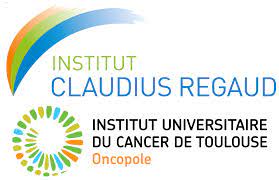Outcome According to Elective Pelvic Radiation Therapy in Patients With High-Risk Localized Prostate Cancer: A Secondary Analysis of the GETUG 12 Phase 3 Randomized Trial
Résumé
PURPOSE:
The role of pelvic elective nodal irradiation (ENI) in the management of prostate cancer is controversial. This study analyzed the role of pelvic radiation therapy (RT) on the outcome in high-risk localized prostate cancer patients included in the Groupe d'Etude des Tumeurs Uro-Genitales (GETUG) 12 trial.
METHODS AND MATERIALS:
Patients with a nonpretreated high-risk localized prostate cancer and a staging lymphadenectomy were randomly assigned to receive either goserelin every 3 months for 3 years and 4 cycles of docetaxel plus estramustine or goserelin alone. Local therapy was administered 3 months after the start of systemic treatment. Performance of pelvic ENI was left to the treating physician. Only patients treated with primary RT were included in this analysis. The primary endpoint was biochemical progression-free survival (bPFS).
RESULTS:
A total of 413 patients treated from 2002 to 2006 were included, of whom 358 were treated using primary RT. A total of 208 patients received pelvic RT and 150 prostate-only RT. Prostate-specific antigen (PSA) concentration, Gleason score, or T stage did not differ according to performance of pelvic RT; pN+ patients more frequently received pelvic RT than pN0 patients (P<.0001). Median follow-up was 8.8 years. In multivariate analysis, bPFS was negatively impacted by pN stage (hazard ratio [HR]: 2.52 [95% confidence interval [CI]: 1.78-3.54], P<.0001), Gleason score 8 or higher (HR: 1.41 [95% CI: 1.03-1.93], P=.033) and PSA higher than 20 ng/mL (HR: 1.41 [95% CI: 1.02-1.96], P=.038), and positively impacted by the use of chemotherapy (HR: 0.66 [95% CI: 0.48-0.9], P=.009). There was no association between bPFS and use of pelvic ENI in multivariate analysis (HR: 1.10 [95% CI: 0.78-1.55], P=.60), even when analysis was restricted to pN0 patients (HR: 0.88 [95% CI: 0.59-1.31], P=.53). Pelvic ENI was not associated with increased acute or late patient reported toxicity.
CONCLUSIONS:
This unplanned analysis of a randomized trial failed to demonstrate a benefit of pelvic ENI on bPFS in high-risk localized prostate cancer patients.
